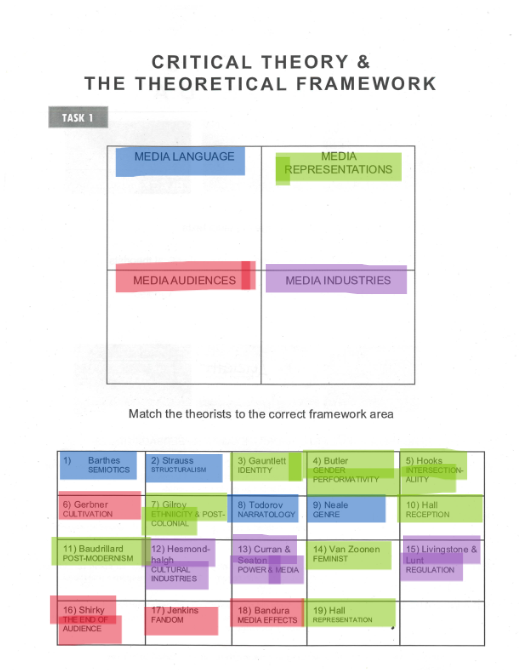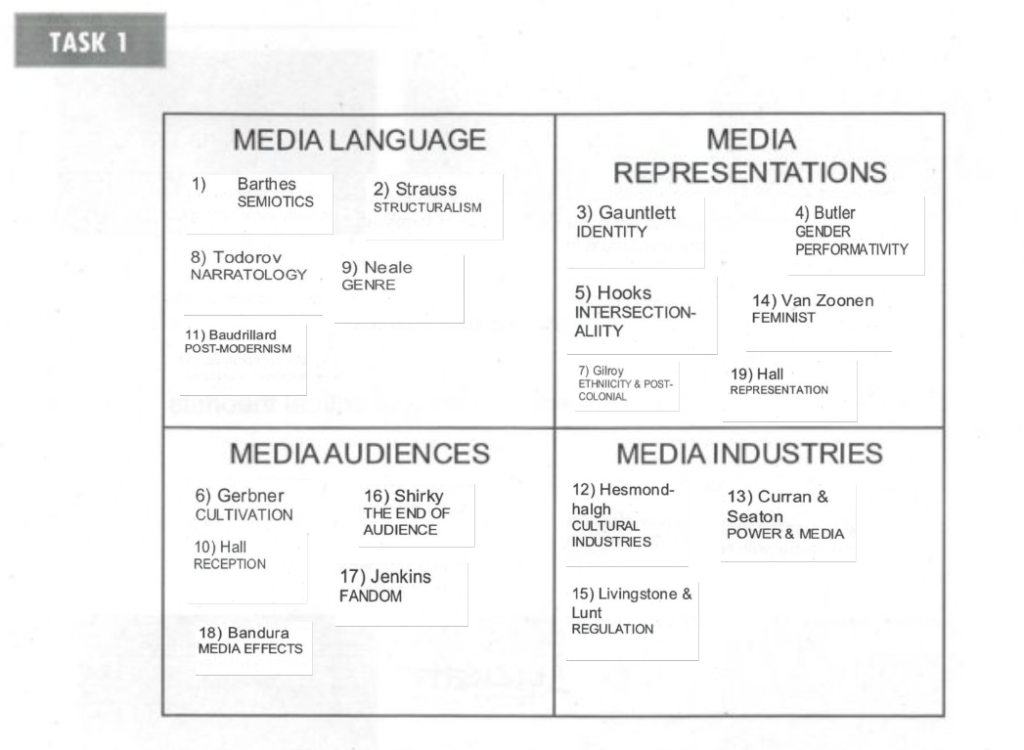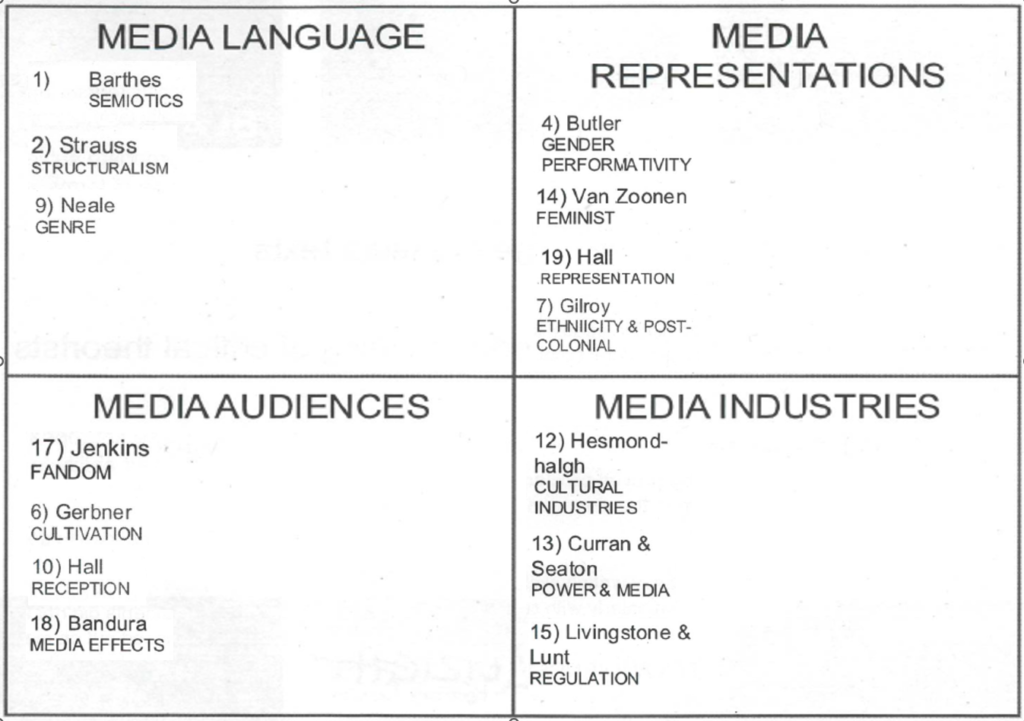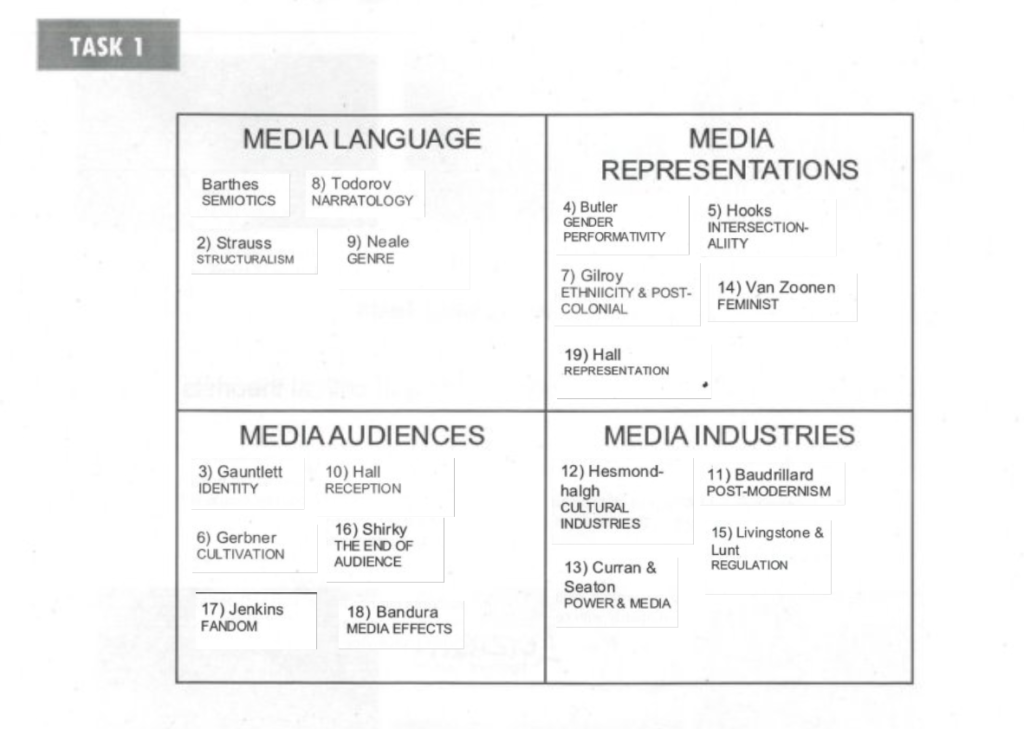Task 1:
Calculate what you need to get to secure your target grade (this link may help you)
| Questions | What went well? | What could be improved? | What I am going to do to make the improvements |
| 1 | I understood how to analyse signs and constructs | Provide more information about signifiers and the key theory | Practice analysing unseen products and go over signifiers again |
| 2 | I knew enough information about my CSPs | I must try to refer to the unseen product and not avoid it | Practice essay questions similar to this one with a CSP and unseen product |
| 3 | I knew quite a bit about Score and Mulvey’s male gaze theory | Include more theories such as bell hooks’ intersectionality | Go over the feminism topic again |
| 4 | I understood the question and Neale’s theory | Use more key words and provide more theories | Go over theories that could be relevant to this question and rewrite it |
| 5 | I understood the key terms and what the hypodermic needle theory was | Make sure to think more before answering | Keep revising and include the key words in some essay questions |
| 6 | I understood the question and had enough information about newspapers | Include a variety of key words in my answers | Re-visit key words from each topic |
| 7 | I understood the question and knew quite a bit about the media industries topic | Could have provided more information and key words | Re-visit the topic and study key words |



Task 2:
Identify how many marks you need to secure your target grade.
I had gotten 60/84=B, B=51 and A=61, my target grade is a B
Calculate how you could achieve the overall mark that you are aiming for as your target. In other words, identify the answers that needed a higher score to secure your target grade
Questions 2, 4 & 7
Rewrite those questions using your notes and the mark scheme
-In Progress-
Question 2:
Question 7:
Task 3:
Complete task 1 on page 4 and post this into a new post on your blog.

Briefly look at pages 5-14 – these pages (and most of the conference) looked at representation and advertising, so there may be something there that will help you.
Briefly look at pages 15-18 (this is something that we will come back to)
Briefly look at 19-20 – this is about Ghost Town




